To better educate both Ice Nine Online clients and anyone interested in learning about digital marketing, here are some of the key digital marketing channels to use to drive business through the web. Look out for future volumes.
Search Engine Optimization (SEO): SEO is short for search engine optimization or search engine optimizer. Search engine optimization is a methodology of strategies, techniques and tactics used to increase the amount of visitors to a website by obtaining a high-ranking placement in the search results page of a search engine (SERP) — including Google, Bing, Yahoo and other search engines. SEO helps to ensure that a site is accessible to a search engine and improves the chances that the site will be found by the search engine.
Search Engine Marketing (SEM): SEM is the process of gaining traffic by purchasing ads on search engines. It is also called paid search and sometimes referred to as CPC (cost-per-click) or PPC (pay-per-click) marketing, because most search ads are sold on a CPC / PPC basis. SEM is short for “search engine marketing,” which once was used as an umbrella term to encompass both SEO (search engine optimization) and paid search activities. However, over time, many adopted the SEM acronym to refer solely to paid search. The largest SEM network is Google Ads.
Display Advertising: Display advertising is graphical advertising on the World Wide Web that appears next to content on web pages, IM applications, email, etc.These ads, often referred to as banners, come in standardized ad sizes, and can include text, logos, pictures, or more recently, rich media.Rich media, synonymous for interactive multimedia, is enhanced media that utilizes a combination of text, audio, still images, animation, video, and interactivity content for active participation from the recipient of the ad.
Behavioral Retargeting (i.e. Google Remarketing): In its most basic form, retargeting serves ads to people more frequently after they have left an advertiser’s website. Some companies specialize in retargeting, while other companies have added retargeting to their list of methods of purchasing advertising. Retargeting helps companies advertise to website visitors who leave without a conversion – this accounts for about 98% of all web traffic. Retargeting is done by displaying ads to the user as they browse the internet, via various ad networks that the agency buys media from on behalf of their Business Customers. Retargeting marks or tags online users who visit a certain brand website with a pixel or a cookie, and then serves banner ads only to the people who have shown at least some amount of engagement in the original brand. Retargeting ad campaigns usually run on lower cost media, which not only increases effectiveness by specifically targeting an interested audience, but also improves the overall ROI of the advertiser.
Facebook Advertising: Facebook’s News Feed ads, launched in late 2012, have proved highly effective. According to research across Marin Software’s client base, advertisers increased spend on Facebook News Feed ads by 140 percent in Q3 2013, compared to a quarter earlier. And it’s no wonder, because News Feed ads work. On average, Facebook News Feed ads have a click-through rate 44x higher, and a conversion rate 5X higher, than right-side ads. And News Feed ads achieve these results at a 67 percent lower cost-per-conversion than right-side ads. News Feed ads are just part of a larger shift toward “native” advertising, which integrates brand messages directly into the editorial flow of websites and social networks. Twitter is basing its growth strategy on native ads integrated into users’ feeds; new publisher powerhouses like BuzzFeed and Refinery29 are gaining rapid market share with their native-first advertising models; and old-guard media companies like Forbes and The Atlantic are counting on natively-embedded ads to boost their bottom lines. Native is a powerful medium because it doesn’t interrupt users’ attention with a pop-up, banner, or pre-roll video ad, and instead makes ads feel like part of the experience. Native ads match the feel, form and function of the sites where they appear. Thus, consumers don’t ignore native ads, they engage with them.In this new native ad economy, Facebook is investing heavily in News Feed ads, allowing advertisers to connect with users through relevant content placed directly in their personal feeds. So while right-side ads probably won’t disappear in 2014, they’ll continue to lose ground to News Feed ads.
LinkedIn Advertising: LinkedIn is the social network of business professionals. With more than 150 million members, it can be an extremely important and effective advertising opportunity when used correctly. The demographics and targeting options of advertising on a social network are powerful and a key differentiator of other PPC advertising outlets. It’s those differences that get people excited, but often times they seem to be the reason why people give up too quickly on them. A mindshift has to occur no matter which paid search outlet you use so you can understand your options, adapt your targeting, and achieve your goals.LinkedIn Ads are painfully easy to get started using and it’s one of the smoothest systems for quickly getting you going. Advertising Tips: http://searchenginewatch.com/article/2154103/LinkedIn-Advertising-Tips-For-Beginners
Twitter Advertising: The type of content and language you promote on Twitter is important. Since you only have 140 characters to get your message across and your content shared, it’s important to spend time analyzing what works best for your business. Soft sells work best on Twitter, meaning free content, blog posts, white papers, and webinars will get the best engagement metrics, as opposed to demo requests or hard sells to make a purchase online immediately.
Social Media Marketing (SMM): is the process of gaining website traffic or attention through social media sites.Social media marketing programs usually center on efforts to create content that attracts attention and encourages readers to share it across their social networks. The resulting electronic word of mouth (eWoM) refers to any statement consumers share via the Internet (e.g., web sites, social networks, instant messages, news feeds) about an event, product, service, brand or company.When the underlying message spreads from user to user and presumably resonates because it appears to come from a trusted, third-party source, as opposed to the brand or company itself,this form of marketing results in earned media rather than paid media.
E-Mail Marketing: Email marketing is the use of email to promote your business by emailing people about the goods or services your business offers. Email marketing can be done through direct promotional emails to customers and potential customers in an effort to persuade them to purchase your goods or service on a first time or recurring basis. The emails can be designed in such a way that it helps promote customer loyalty and enhances their experience working with you using things such as coupons or freebie promotions. Email marketing can also be done in such a way that the promotion is less evasive by simply placing your marketing message on an ad at the bottom of emails sent by other people.
- Direct Email – these emails have a promotional message within them that encourages the customer or potential customer to come view your business website and purchase your product. It can include a special offer, coupon, or other promotional item that can be used towards the purchase. These can be sent to a list of customers that your site has legally collected or to a permission based list from another company that you are partners with. In these emails, you can target your message to the customer.
- Retention Email – these emails go to your existing customers in an effort to retain them as customers. They can take the form of newsletters, advertisements, and other promotional methods. The email should give the customers valued information that is more than just a sales message. It should be entertaining.
- Advertising In Other People’s Emails – a method of piggybacking, you pay others or work with a partner company to place your advertisements in their emails to send to their subscribers. Some places allow you to do this for free, like email newsletters.
Share this Post

